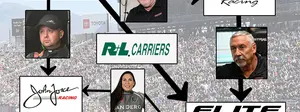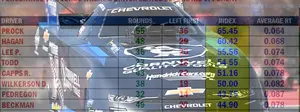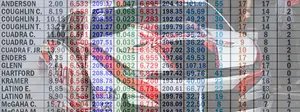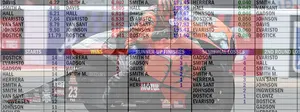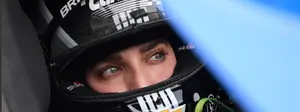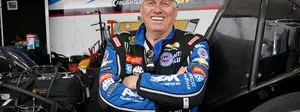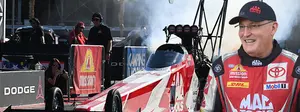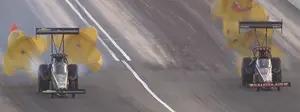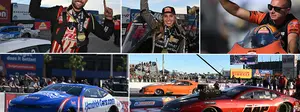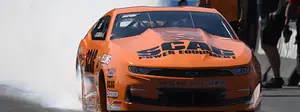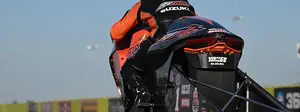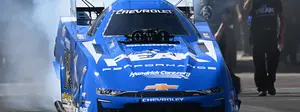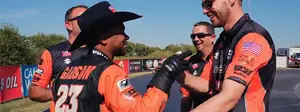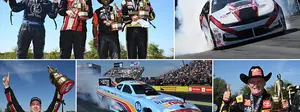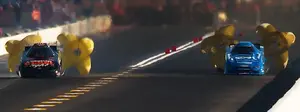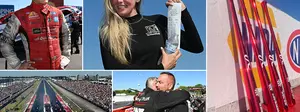

Ready to drag race? Here's how to get started
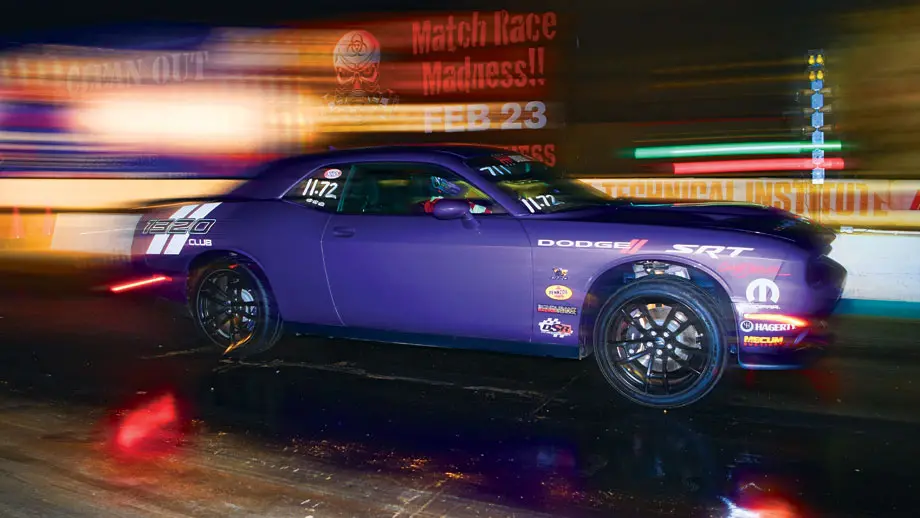
At its core, drag racing is a simple sport, a straight-line competition that most commonly takes place on eighth- and quarter-mile dragstrips. I say simple because almost anyone with a driver’s license can make runs with everything from street-legal vehicles to a dedicated race car. And whether you’re after head-to-head competition, or if you just want to see how quickly your car can run, NHRA sanctioned tracks provide a safe and fun environment for you to experience drag racing.
Nevertheless, racing for your first time can be intimidating. How do you find a place to race? What should you bring? In essence, how does it all work? We know it can sound daunting, but we’ll walk you through every step of the process to get you up to the starting line. We’ll cover what happens after that, but for now, let’s just get you comfortable getting to that point.
Prepping for Your Day at the Track

Step one, obviously, is finding a place to race. NHRA member tracks are listed on NHRA.com; click here, then select your state, then scroll through the list of tracks in your area. You should either visit the track’s website or call the provided phone number to check out the schedule and be sure the track is open for racing.
Most tracks offer days/nights dedicated to test and tune. This is the best time to get started. On a test and tune day (or night), you’ll simply be making runs so you won’t be concerned with competition. It will be you against the clock. This allows you to focus on learning track etiquette and procedures to get you safely down the track.
Before making a run, NHRA will require that your car passes technical inspection. You can save yourself time by giving your car a once-over ahead of your track day. Ensure that your seat belt works as designed, that all lug nuts are in place and tight, and that all your hoses, clamps, and battery are secure. It’s also a good idea to remove any loose items, too, whether they are in the cabin or the trunk.
We do recommend you bring a tire pressure gauge, helmet (which may be mandatory based on the performance of your vehicle), and basic tools if you plan to do any work. It’s also a good idea to pack sunscreen, snacks, drinks, and cash — because not all tracks accept credit card.
Arriving at the Track

Another pro tip is to arrive early. Tracks often get busier as the day/night goes on, so being early will ensure you get ample track time. At the gate, you’ll pay the entry fee, which can vary, but should be around $20-30 for a typical test and tune night. You’ll receive a tech card that you are required to fill out (so having a pen is a good idea). It will ask for personal and vehicle information. Once you have the card, head to technical inspection. Some tracks have a dedicated area, however, “tech” may also take place in the staging lanes. The official will generally look to see that your vehicle has no leaks, a secure battery, and working seat belt. The level of safety gear needed depends on the performance of your car. NHRA currently allows vehicles that are 2008 or newer to run 10.00 without a roll bar, but it’s likely you’ll need an SFI-approved helmet.

Once your car is approved, the inspector will write, in shoe polish, a competition number on your car. You’re almost ready to go!
The tech official can also direct you to the staging lanes, where you’ll be instructed to get in line. But before heading to the staging lanes, it’s recommended to take a drive around the facility. It’s always good to note the location of the food shack, bathrooms, and, if possible, look at the shutdown area. Note whether you’ll exit the track to the left or right. Virtually all tracks broadcast the announcements over PA, so pay attention to the track’s public announcements or ask an official. You also can sit in the grandstands for a while to watch how everything unfolds. Watch the cars as they exit the staging lanes, which starting-line officials are controlling the various aspects of the run, and how the racers approach the starting line and stage for their runs.
To the Lanes!
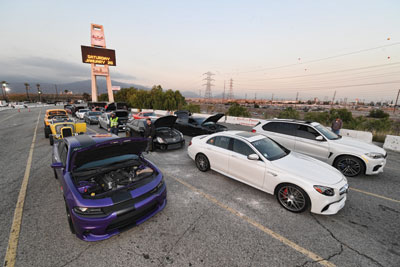
Tracks often separate cars in the staging lanes based on class, by the type of tires you’re running (slicks versus street tires), or by the type of Tree (Sportsman or Pro). If you don’t find an official, simply ask another racer. The staging lanes are also a great place to meet your fellow racers. Don’t be shy about asking for tips or advice. The racing community, especially at the member-track level, is a very friendly environment and, let’s face it, at some point everyone was in your shoes.
Once you’re in the lanes, pay attention to the flow of cars moving from the lanes to the track. Always stay with your car, so you don’t hold things up if your lane is called to run. Make sure you secure all loose items in the cabin and in the trunk. Make certain that your hood is shut and latched properly, and when it’s your turn, strap on your safety belt, helmet (if required), and fire the engine. Turn off your air conditioning to prevent water from dripping on the track and power down your radio as well.
At this point, you also can reset your tire pressure. Slightly lowering rear tire pressure (on rear-wheel drive cars) will often give you better traction. The reason is that it increases the size of the contact patch. However, avoid going too low, as this will hurt traction. For instance, if the stock recommended pressure is 32-35 psi, lower it to 28-30 psi as a starting point. (Note: many tracks offer a public air compressor so you can set the proper pressure for the ride home.) You don’t have to do this at all, but experience and advice from your fellow racers will help guide your decisions.
It’s Your Turn!

As you reach the head of the staging lanes, you will be met by a lane master whose job it is to direct you to the lane — either left or right — that you will run in. Follow his or her instructions closely, and watch the cars directly in front of you as your guide. Before you get to the starting line, there will be an area filled with water where you can do a burnout to heat and clean your tires if you choose.
It goes without saying that burnouts are fun, but you’ll also notice that many street-driven cars bypass the water box entirely. There are many schools of thought about the need for a burnout in slower cars and how much benefit a street tire will get from a burnout, especially if you’re not interested in adding wear to the tires on your daily driver. With street tires, it is recommended that you go around the water puddle. That’s because even after a burnout, water can remain in the tread, and water is not necessary to allow street tires to spin and smoke.
If you do choose to do a burnout, remember that it’s easy to overdo it. A properly done burnout will heat and clean the surface of your tires to provide maximum traction on launch. Most production street tires utilize a compound or tread that is harder than racing-specific tires and a short burnout is all that’s necessary. Creating a smoke show may look impressive, but it will cause the oils within the rubber to surface, resulting in your tires becoming greasy. If you go around the water, be sure to get back in the groove and line up facing downtrack.
Making Your Run

The time has come to make your run. It’s the moment of truth. Your heart will be pumping and adrenaline will be flowing through your body. It’s a good idea to keep aware of your surroundings and keep an eye on the officials. Now’s the time to breathe. Follow the starter’s commands, take a few deep breaths, and carefully inch the car into the pre-stage beam. Most novices roll up to the line too quickly, and this can cause you to immediately “stage” in the same motion. Take your time. No one expects perfection, and the track officials know this and are there to help.
Keep your eyes glued to the Tree, and once the pre-staged light comes on, stop. You’ll be inches from staging, and once you do so, the timing system can be activated. Take a moment to clear your mind. Take note of the car in the other lane. It’s proper etiquette to allow the person in the opposite lane to pre-stage before you stage (assuming they haven’t staged already). And once both drivers are pre-staged, allow your car to inch forward very slowly until the “staged” light comes on. Once both drivers have staged, the timing system and Christmas Tree starting system will activate.
We’ll go into more detail in future articles about advanced strategies for staging and racing, but for now, just enjoy the thrill of safe and supervised speed. As you cross the finish line, roll out of the gas and begin to brake.
Slow your car in a smooth fashion and note the position of your opponent. If your car is quicker, he or she may be behind you, even after you’ve slowed and are prepared to turn off the track. If you are driving the slower car, stay sharp to ensure your opponent sees you and doesn’t turn in front of you to exit the track.
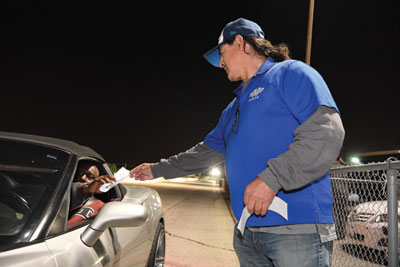
Keep your helmet and seat belt on, and exit the track at a safe speed. Your next stop will be the time slip booth. Drive slowly and retrieve your time slip. It’s natural to look at it immediately, but after your do so, put it down and head back to the pits or the staging lanes. The pits are a busy place so remain aware. Keep your eyes open for spectators, racecars, and pit vehicles.
Back in the pits (or lanes), take a closer look at the slip. You’ll know immediately if the runs met your expectations. One thing is certain, though, you’ll be hooked and ready to go again. The good thing is that you can get right back into the staging lanes. It’s normal to take a few runs to get comfortable, so keep practicing, and it’s likely you’ll improve with every run.
Most importantly, have fun while you learn, and before you know it, your reaction time will be tight and your elapsed time will get quicker. Chances are you’ll want more power, a quicker elapsed time you’ll crave competition.























